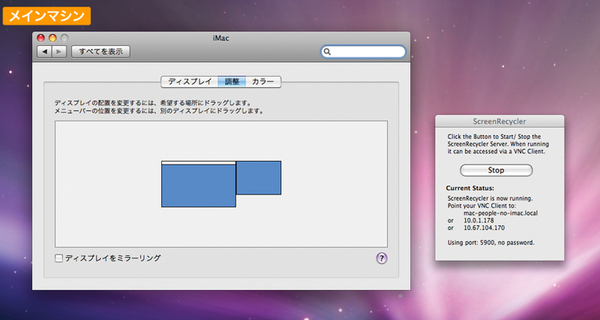

- #Screenrecycler for windows install
- #Screenrecycler for windows driver
- #Screenrecycler for windows pro
- #Screenrecycler for windows trial
(Options, Expert, Monitor: 0 for all, 1 for primary monitor, 2 for secondary…). I have chosen RealVNC, because it supports multiple monitors and allows me to define, which monitor is transmitted over VNC. Screenrecycler uses port 6900, other VNC servers normally use port 5900. You'll have to make one connection to the Screenrecycler VNC server (when you have configured a private network in VMware, the corresponding IP should be listed in the Screenrecycler window below your real IP.)Īfterwards, you can click "stop" in the Screenrecycler window, launch a different VNC server and connect to that one. The Screenrecycler VNC server does not support any authentication (password) and seems to be pretty slow in combination with Windows VNC clients. "Arrange" the monitors if necessary in System Preferences.Ĥ. Open System Preferences -> Monitor (under Mountain Lion choose "scaled"). On your Mac, you should adjust the screen resolution to the resolution supported by the monitor you have connected. Set up the VNC client to use raw encoding in order to minimize CPU usage for the virtual machine!Īs soon as there is a VNC connection, Screenrecycler will simulate a real monitor.

For Windows, TightVNC seems to be one of the best options. Connect to the Screenrecycler VNC server with any VNC client.
#Screenrecycler for windows install
Install and run Screenrecycler on your Mac. This way, the VMware window will be black and the external display will be the only monitor.ģ. Mouse navigation was a bit tricky and I found it best to set up the monitor as the primary and only display in "Multiple Monitors". Keep in mind that you can always disconnect the mouse from your virtual machine by pressing CTRL + COMMAND. The external monitor should be recognized. (Reboot?)Ĭonnect the DisplayLink adapter and tell VMware to always connect this USB device to the virtual machine.
#Screenrecycler for windows driver
Install the DisplayLink driver as well as the "Actual Multiple Monitors" software. When plugging in the DisplayLink adapter, VMware Fusion and Windows 8 and Parallels and XP or Windows 8 will either tell you, that your hardware is not compatible with DisplayLink (VMware), or simply just crash (Parallels).Ģ. Therefore, I have chosen "private" (NAT) in the VMware virtual machine network settings.įor your interest, I can confirm that the DisplayLink driver will only work in a virtual machine when using VMware Fusion and Windows XP. I wanted to make sure, that the VNC connection is not directed over any network cable and, furthermore, I feel better when an out of the box XP installation is not connected to the internet.
#Screenrecycler for windows trial
Set up a virtual machine with Windows XP (I used SP 2) in VMware Fusion (used the current trial version) install the VMware tools (default). Currently, performance is probably like VNC over a basic broadband connection (i.e. I am trying to optimize performance though. Overall, it is a combination of running XP in VMware Fusion, Screenrecycler on the Mac and setting up a VNC connection between the Mac and the Virtual Machine.
#Screenrecycler for windows pro
While we are all waiting for a DL-3xxx driver for OS X, I am pleased to report, that I have found a workaround for connecting a Displaylink DL-3xxx adapter (Lindy USB 3.0 DisplayPort Adapter) and a 30" monitor (Dell U3011) to a MacBook Pro (17", 2010, quad i5, 8 GB RAM, Mountain Lion) in addition to another display (27" Dell) connected "natively".


 0 kommentar(er)
0 kommentar(er)
